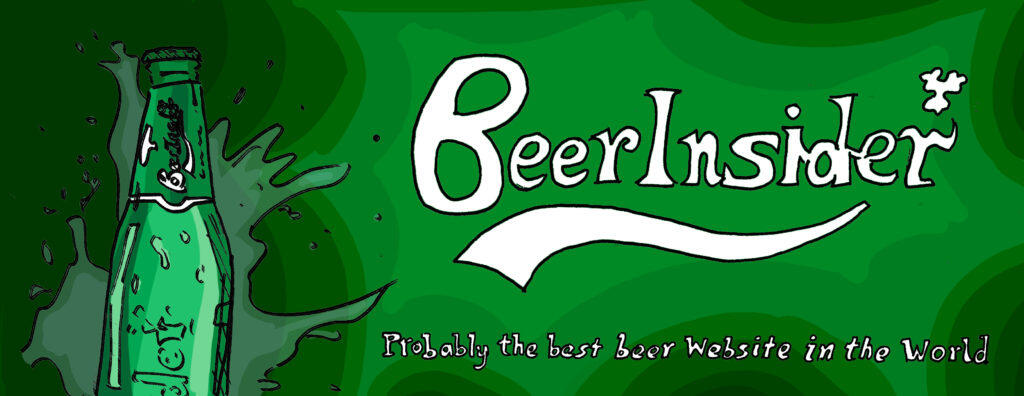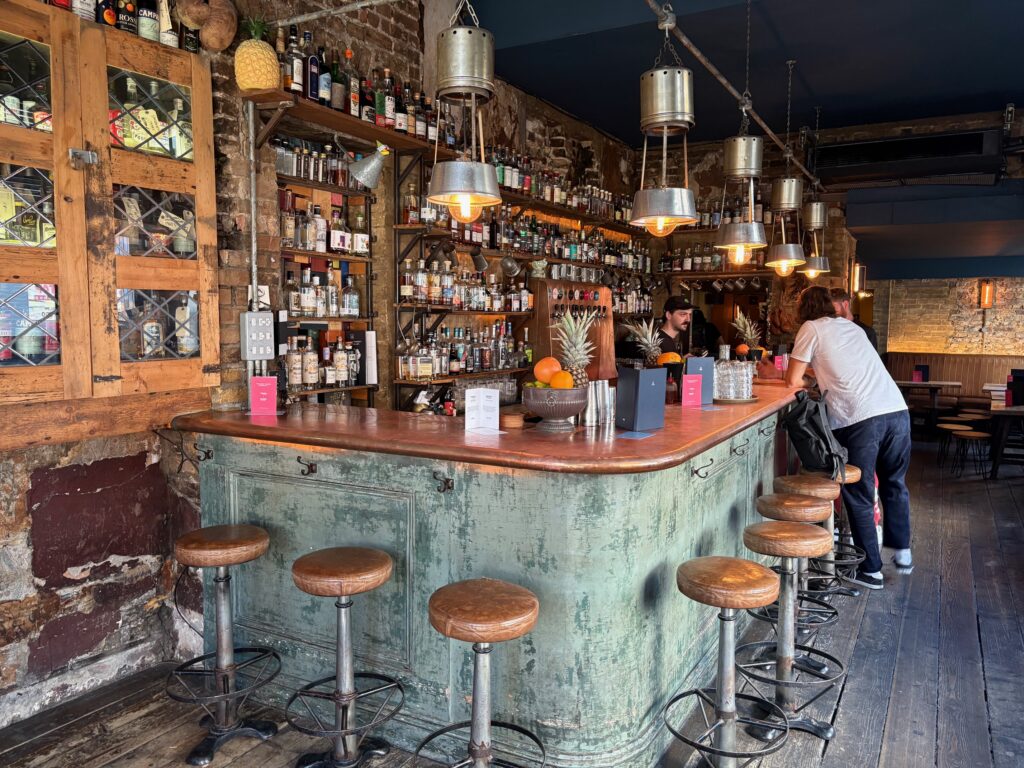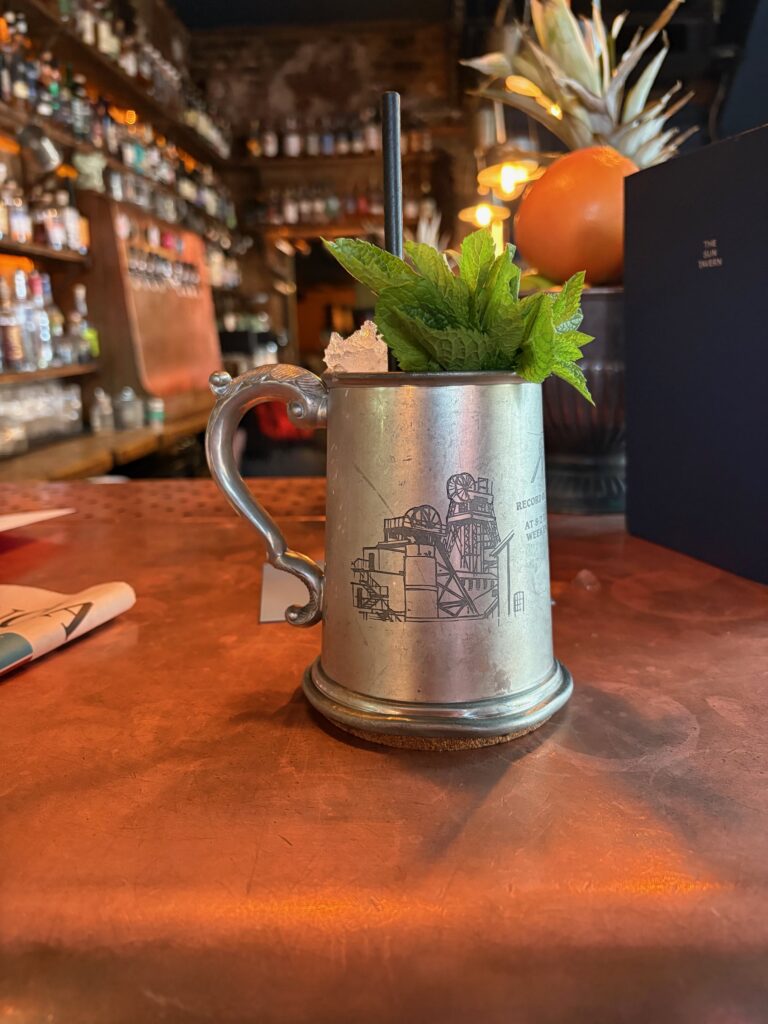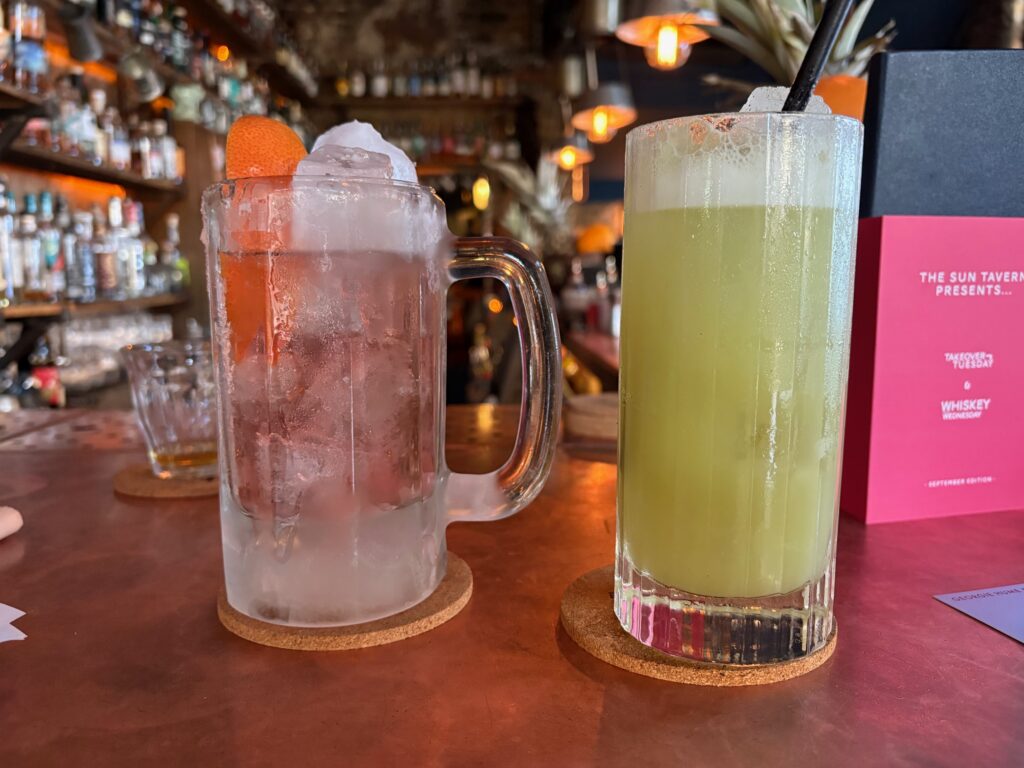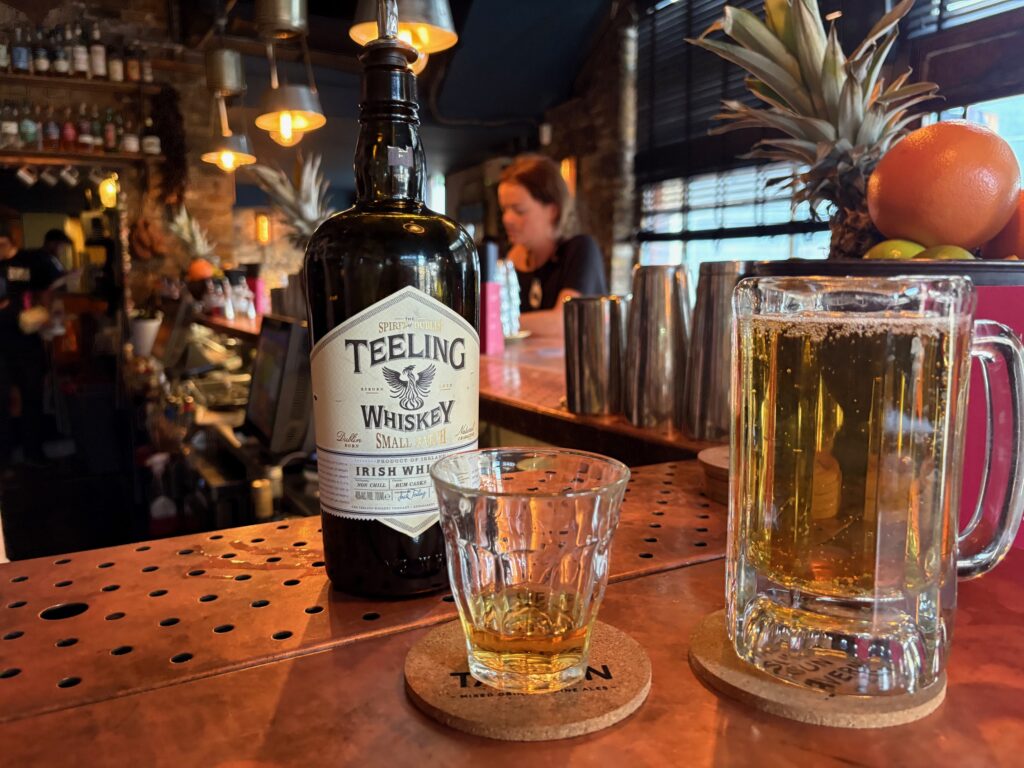Striking out at The Sun Tavern
On an early Monday evening as the sun flooded into The Sun Tavern in London’s East End the tube strikes clogging up the city outside seemed very far away. They drifted even further into the distance after a few of the bar’s cocktails.
What was previously something of an old geezers bar, I was told, the place has morphed into a cult East London cocktail bar that now attracts a younger crowd. Although there are a few beers (mainly local lagers) the place is very much focused on delivering cocktails at value price points – most options come in at around £10 and service on top is a modest 10%.
It’s a modest range on offer – with a menu comprising nine seasonal cocktails and a handful of classics – but I quickly found out the very capable team are more than willing and able to knock-up whatever you fancy. After trying the whiskey and rum-based Wobbles on Cobbles and the matcha-powered Joyride I was presented with a Right Hand (in the Negroni family) after a brief discussion with bar man Mateus about my tastes.
He was ably assisted by Pete and Darren, with the latter also serving me up a Beer and Bump comprising a half a pint of beer alongside a shot of Irish whiskey (Teeling small batch in this case). While the cocktails menu is concise the Whiskey and Poitin list is extensive, with over 200 varieties available. Prices cover all bases, ranging up to three-figures for the rare stuff.
The menu of snacks is made up from ingredients sourced from Provisions Wine & Cheese, with dishes including Whipped Feta with Heritage Tomatoes, Parmesan Petit Saucisson and Tuna Pate served with Toasted Sourdough.
The Sun Tavern is independently owned and part of a growing range of venues under the Umbrella Project that also includes the Discount Suit Company, Umbrella Workshop and Parasol. When the tube strikes end there is no excuse for not venturing east and enjoying the stripped back vibe at The Sun Tavern and the enthusiastic team whipping up some mean cocktails.
Glynn Davis, editor, Beer Insider
Let’s be more crisp with pub snacks
The hanging basket-adorned Cross Keys pub in Endell Street in Covent Garden was a regular stop-off point for me before heading for an Indian meal at the sadly long-gone Neel Akash restaurant (replaced by Sainsbury’s in Hanway Street). Another plus point was that it also stocked the rarely seen roast turkey and stuffing crisps from…
Good news for pubs
Whenever my family and I venture out into the country on short breaks, my priority when booking the accommodation is the close proximity of a pub. This caused slight issues on our recent cycling trip, as the lovely Horse & Jockey in Manton, Rutland, was about 50 metres away from the Airbnb that I’d booked,…
Book review – ‘Ale City – St Albans’ Beer History and Remarkable Pubs’
St Albans is a city I’ve visited infrequently even though each time has involved thoroughly enjoyable forays into its wonderful pubs. I’m not sure why I’ve not been more often but I’m definitely planning to return very soon as I’ve just completed reading a new book on the history of the city and its pubs….
Desert Island Pubs – Simon Potts, CEO, The Alchemist Bars & Restaurants
Simon Potts, CEO, The Alchemist Bars & Restaurants 1. Earliest Memory of a Pub I have one of those memories that has perhaps been forged more from my Dad’s retelling over the years – we were on the Isle of Mull on the annual holiday that we took with another couple of families. One day…
Desert Island Pubs – Andreas Akerlund, co-owner, Grace Land Pub Group
Andreas Akerlund, co-owner, Grace Land Pub Group 1. Earliest Memory of a Pub I moved to London in the 1980s when I was in my mid-teens. It was a different world back then. I can’t exactly remember my first pub but a stand-out from that time was the Sun Tavern in Barnes. Many Swedes live…
Czeching out new Czech bar
Having previously been involved with a London-based Czech lager brewery that left a sour taste in my mouth it has not put me off the country’s lovely lagers. It was therefore enjoyable to visit The Stranded bar on London’s The Strand where Bloomsbury Leisure Group has opened a new venue dedicated to serving Czech lager…
